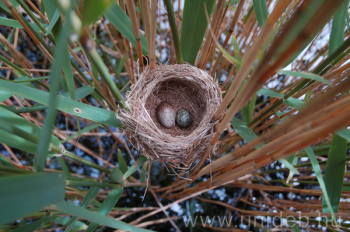
Understanding Brood Parasitism: A Unique Reproductive Strategy in Birds
Bird species exhibit a fascinating range of reproductive strategies, among which interspecific brood parasitism stands out as particularly intriguing. This behavior involves laying eggs in the nests of other species, which then raise the parasitic bird’s offspring. The University of Debrecen, Hungary, has actively contributed to understanding this phenomenon through innovative research led by Professor Jenő Nagy and his team. Their work sheds light on how certain bird species, like the cuckoo, select host nests and how these interactions evolve over time.
Brood parasitism offers distinct advantages for parasitic birds, primarily by reducing their reproductive costs. Instead of investing resources in building nests and raising young, parasitic species can focus on egg production. This strategy effectively transfers the burden of incubation, feeding, and rearing to the host species, often ensuring higher survival rates for their offspring. The research from Debrecen enhances our understanding of this complex evolutionary arms race, focusing on how nest architecture and accessibility influence host selection.
Assessing Nest Types and Accessibility in Bird Parasitism
The diversity of nest architectures across bird species plays a crucial role in their vulnerability or resilience against brood parasitism. The Debrecen team classified nests into several categories, including scoop-shaped, cup-shaped, nests with lids and tunnels, and those built within burrows. These variations impact how easily parasitic birds like cuckoos can access and lay their eggs in host nests.
For example, simple cup-shaped nests or those with minimal concealed features are more accessible to brood parasites. Conversely, nests with complicated structures such as tunnels, lids, or situated deep within burrows act as natural defenses. Interestingly, some species, like certain pigeons, use minimalistic nest materials, which can be easily targeted by parasites.
Research indicates that parasitic species often prefer nests that are easier to access and less protected. This preference is supported by data showing that around 1,700 bird species worldwide are known to accept eggs other than their own. In extreme cases, a single parasitic bird species may target up to 200 host species, demonstrating the extensive evolutionary adaptability of brood parasites.
The Evolutionary Arms Race: Host Defenses vs. Parasitic Strategies
The ongoing coevolution between host species and brood parasites is a dynamic process characterized by adaptations and counter-adaptations. Host species have developed various defenses to reduce parasitism risk, such as building more concealed nests, forming communal defenses, or recognizing and rejecting foreign eggs. Parasitic birds, in turn, have evolved strategies to bypass these defenses, including mimicking host eggs and selecting optimal nesting sites.
Debrecen’s research aimed to identify what features of nests influence host selection by parasitic birds. The study hypothesized that the architecture and accessibility of nests are key factors in this evolutionary battle. The findings, published in a prestigious international journal, support the idea that nest features shape the coevolutionary dynamics of brood parasitism, with parasitic species most often choosing nests that are easier to exploit.
Implications for Conservation and Bird Species Research
Understanding the intricacies of brood parasitism and nest selection has broader implications for bird conservation. Many host species are threatened or endangered, and parasitic pressures can exacerbate their risks, especially when combined with habitat loss and climate change. By studying these interactions, conservationists can develop targeted strategies to protect vulnerable bird populations.
Furthermore, this research contributes to evolutionary biology by providing insights into how complex behaviors like brood parasitism evolve and persist. It highlights the importance of nest architecture in the survival strategies of bird species and underscores the ongoing coevolutionary arms race shaping avian diversity.
How the University of Debrecen Pioneers Ornithological Research
The University of Debrecen has established itself as a significant player in ornithological studies, particularly in understanding bird behavior and evolution. Through international collaborations and comprehensive data collection involving over 6,200 bird species worldwide, the university’s researchers have advanced scientific knowledge in this field.
If you are a bird enthusiast, researcher, or conservationist, exploring ongoing projects at Debrecen can offer valuable insights and opportunities for collaboration. Their innovative methodologies, combining field observations and data analysis, set a benchmark for ornithological research globally.
Final Thoughts: The Significance of Nest Architecture and Behavioral Adaptations
The study of bird nest selection, especially within the context of brood parasitism, reveals the intricate balance of evolutionary strategies that sustain avian biodiversity. It underscores how physical features like nest architecture significantly influence survival and reproductive success. For researchers, conservationists, and bird watchers, understanding these mechanisms enhances our ability to protect bird species and appreciate the complexity of natural behaviors.
To stay informed about pioneering research from the University of Debrecen and explore related areas of ornithology, consider engaging with their resources and publications. For those interested in supporting bird conservation efforts or furthering scientific research, collaborating with institutions like Debrecen offers meaningful opportunities to contribute to this fascinating field.
Interested in more about bird behaviors and conservation efforts? Explore the latest research updates from the University of Debrecen.

